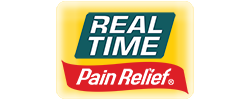Off Classroom Activities and Sports
Posted by Dennis R. Escalera on 1st Aug 2024
Extracurricular activities and sports are crucial for a child’s physical and mental development. However, it’s important to engage in these activities safely to prevent injuries and ensure a positive experience.
1. Warm-Up and Stretch
Before any physical activity, children should perform warm-up exercises and stretches to prepare their muscles and reduce the risk of injuries. A proper warm-up increases blood flow to the muscles, enhances flexibility, and prepares the body for more intense activity.
2. Use Proper Equipment
Ensure that children use appropriate and well-fitted equipment for their activities. This includes helmets, pads, and appropriate footwear. Proper gear can prevent injuries such as fractures, sprains, and concussions. Check equipment regularly for wear and tear and replace it as needed.
3. Stay Hydrated
Encourage children to drink water before, during, and after physical activities to prevent dehydration. Dehydration can lead to fatigue, dizziness, and more serious health issues. Offer water breaks every 15-20 minutes, especially during hot weather.
4. Know the Limits
Overexertion can lead to injuries and burnout. Ensure children take regular breaks during activities to rest and recover.
5. Supervision and Training
Proper supervision and training are essential. Coaches and trainers should provide correct instructions and ensure that children follow safety protocols. Coaches and trainers should be knowledgeable about the specific sport or activity and be able to teach proper techniques and strategies.
6. Cool Down
After activities, a cool-down period with light exercises and stretches can help the body recover and reduce muscle soreness. Cooling down gradually lowers the heart rate and helps prevent stiffness and injuries.
7. Balanced Schedule
Maintain a balanced schedule that includes time for rest and recovery. Avoid overscheduling children with too many activities, which can lead to stress and fatigue. Ensure they have time for academics, relaxation, and family.
8. Proper Nutrition
Ensure children have a balanced diet rich in essential nutrients. Proper nutrition supports physical activity and overall health. Include a variety of fruits, vegetables, lean proteins, and whole grains in their meals.
References:
- Centers for Disease Control and Prevention. "Youth Sports Injury Statistics and Prevention." Available at: https://www.cdc.gov/heads-up/training/youth-sports.html
- National Institute of Arthritis and Musculoskeletal and Skin Diseases. "Sports Injuries." Available at: https://www.niams.nih.gov/health-topics/sports-injuries
- HealthyChildren.org "Is Your Child Ready for Sports?." Available at: https://www.healthychildren.org/English/healthy-living/sports/Pages/Is-Your-Child-Ready-for-Sports.aspx
- Mayo Clinic. "Know what sports are appropriate for your child." Available at: https://newsnetwork.mayoclinic.org/discussion/know-what-sports-are-appropriate-for-your-child/





